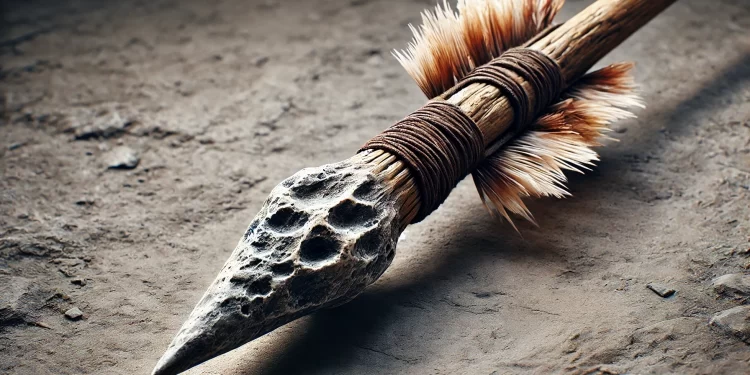European hunter-gatherers may have developed advanced weaponry much earlier than previously thought, according to a groundbreaking study. This research suggests that poison-laced arrows were part of the hunting tools used around 54,000 years ago—much earlier than the conventional timeline for such technological advancements. If confirmed, this would revolutionize our understanding of how early humans hunted, implying that they employed far more sophisticated techniques than previously believed.
Early Evidence of Bows and Arrows in Europe
Up until now, the oldest confirmed use of bows and arrows in Europe dates to approximately 12,000 years ago, from the Stellmoor site in northern Germany, near Hamburg. These early weapons were thought to mark the transition from throwing spears to archery, significantly improving hunting efficiency. However, wooden elements of ancient weapons, such as bows and arrow shafts, decompose over time, leaving researchers with stone points to work with.
To address this limitation, scientists analyzed over 500 Paleolithic stone points from 25 sites across northern Europe, spanning from 14,700 to 11,700 years ago. By examining the Tip Cross-Sectional Area (TCSA) of these arrowheads, researchers were able to estimate how deeply the arrowheads could penetrate and their effectiveness in cutting through animal hides, offering crucial clues about how these weapons were used.
Poison Arrows: A Technological Leap in Hunting
The TCSA analysis provided fascinating insights. According to the study, arrowheads designed for poison use often feature smaller tips that require minimal penetration. The primary goal is simply to puncture the skin, allowing the poison to enter the prey’s bloodstream, which minimizes the need for deep cuts.
Initial findings from the research revealed that some of the oldest arrowheads shared TCSA values with those from Stellmoor, suggesting that archery was already in use at least 14,700 years ago—pushing back the timeline for archery in Europe by nearly 3,000 years. Moreover, certain stone points bore strong resemblance to projectiles from African regions where the use of poison arrows has long been documented. This evidence raises the possibility that Paleolithic Europeans were hunting with poison-tipped arrows.
Discoveries at Mandrin Cave
The researchers took their study further by analyzing stone points found in the Mandrin Cave in southern France, dating back 54,000 years. The results were astonishing: approximately 25% of the points were found to be ideally suited for poison-tipped arrows, while another 45% were optimal for regular, non-poisoned arrows. This suggests that archery and poison weapons were already in use by this time, challenging previous assumptions about when such technologies emerged.
Although the exact toxins used by these early hunters remain a mystery, the study offers a list of 58 plant species from northern Europe that could have served as potential sources for poison extraction during the Paleolithic period. This opens up new avenues for future research into the types of plants and compounds used in ancient hunting techniques.
A New Perspective on Ancient Hunting Practices
These findings force us to reconsider the capabilities of Paleolithic hunter-gatherers. Far from being simple and rudimentary, their hunting methods may have been far more complex and innovative than we’ve previously assumed. Poison arrows would have given these early humans a significant advantage, allowing them to hunt more effectively and perhaps target larger or more dangerous prey with greater safety.
As researchers continue to investigate the toxins that may have been used and explore the broader implications of this discovery, one thing is certain: this revelation reshapes our understanding of Stone Age hunters. The study offers a tantalizing glimpse into the sophistication of human ingenuity during the Paleolithic era, providing a richer, more complex picture of our ancestors’ lives and survival strategies.











